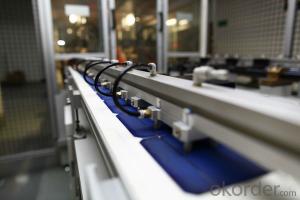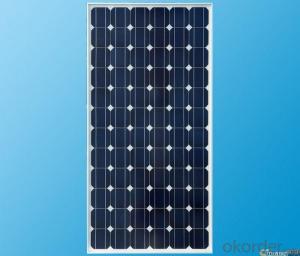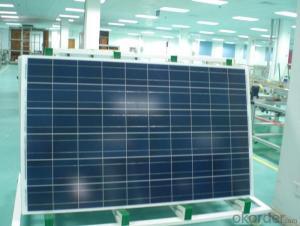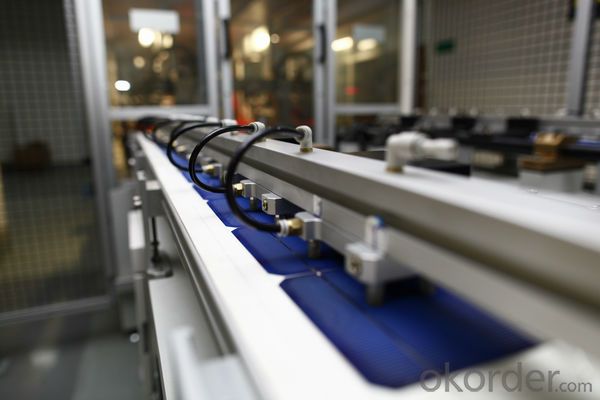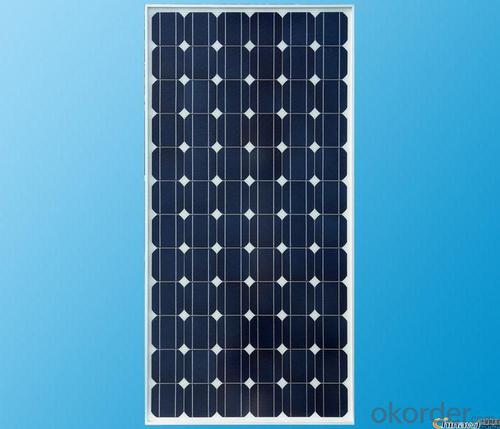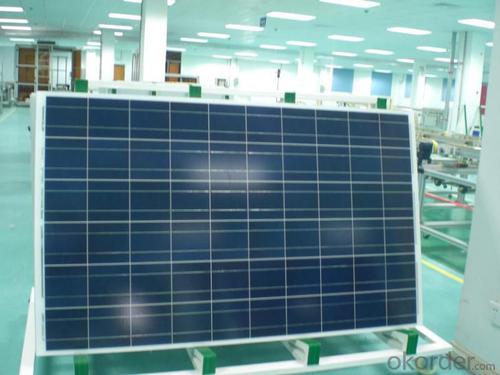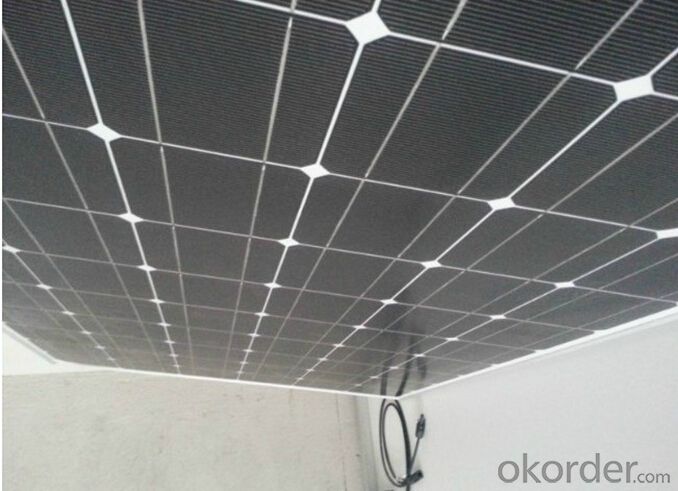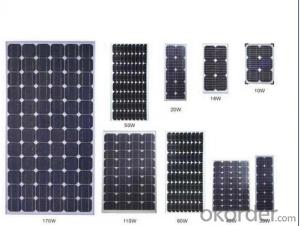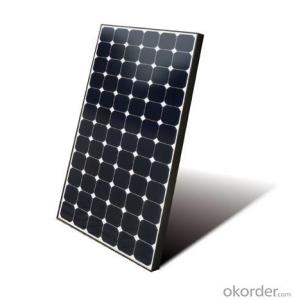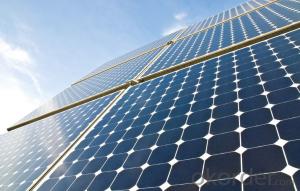Making Solar Cells:Powerful 230W 48V Monocrystalline Solar Module
- Loading Port:
- Shanghai
- Payment Terms:
- TT OR LC
- Min Order Qty:
- 11 watt
- Supply Capability:
- 1111111 watt/month
OKorder Service Pledge
OKorder Financial Service
You Might Also Like
1.Structure of Solar Module Description
The solar module is an off-gird solar power generator, designed to provide stable and reliable electricity to homes and communities without access to grid electricity or to those regions where are short of power or even without power. The solar module is convenient to move, easy to set-up with reliable performance, making it ideal for situations where emergency power is required. It is an ideal & reliable energy source for a wide variety of applications, ranging from lighting , radios, fans ,televisions ,computers ,refrigerator. The USB port is compatible with all 5V-USB charged devices. It can also act as a back-up power source during emergency situations.
2.Main Features of the Solar Module
1).High conversion efficiencies resulting in superior power output performance.
2).Outstanding power output even in low light or high temperature conditions
3).Optimized design for ease of soldering and lamination
4).Long-term stability,reliability and performance
3.Solar Module Images

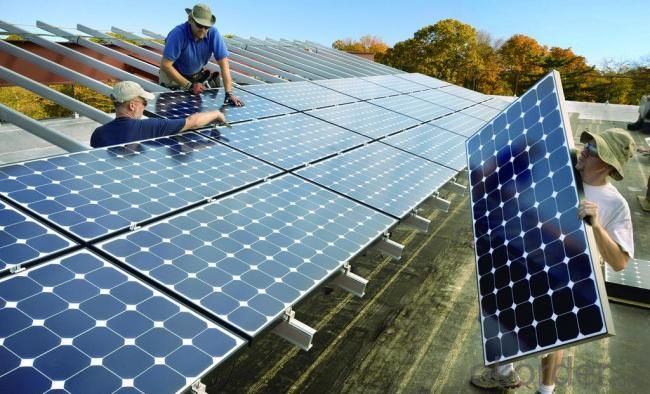
4.Solar Module Specification
1)High module conversion efficiency up to15.3% 2)25-year limited warranty on power output 3)TUV,UL,IEC61215,IEC61730,ISO,MCS,CEC
2) We offer you strongly competitive prices !
3) We offer the fastest shipping !
4) we can accept small order!
5) we design various of watt according to customer!
6) We have the best customer service team!
7) We have excellent manufacturer solar panel warranty policy !
Thanks for attention and hope to hear from you soon!
| Model Type | GY230M-60 | |||||
| Model power(Pmax) | 230WP | |||||
| Model power Voltage(Vmp) | 29.6v | |||||
| Model power Current(Imp) | 7.82A | |||||
| Open circuit voltage(Voc) | 36.9V | |||||
| Short circuit current(Isc) | 8.26A | |||||
| NO.of Diode | 6 | |||||
| Maximum System Voltage | 1000V(TUV)DC | |||||
| Maximum Series Fuse Rating | 10A | |||||
| Power Tolerance | ±3% | |||||
| Temperature Coefficients of Pmax | -0.44%/°C | |||||
| Temperature Coefficients of Voc | -0.33%/°C | |||||
| Temperature Coefficients of Isc | -0.04%/°C | |||||
| Nominal Operating Cell Temperature(NOCT) | 47±2°C | |||||
| STC:Irradiance 1000W/m2 Module Temperature 25°C AM=1.5 | ||||||
CELL TYPE | 156*156mm MONO SOLAR CELL |
No.of Cells | 60 |
Dimensions | 1640*992*40/45mm |
Weight | 20.5KG |
Front Glass | 3.2mm High transmission,lowlron,tempered Glass |
Frame | Anodized Aluminium Alloy |
Junction Box | IP65 Rated |
Output Cabies | TUV |1*4.0mm2| Length 900mm |
5.FAQ of Solar Module
1). Q: Are you a factory or trading company?
A: We are a factory.
2). Q: Where is your factory located? How can I visit there?
A: Our factory is located in Jiangyin, Jiangsu, China, near Shanghai. You are warmly welcomed to visit us!
3). Q: How can I get some samples?
A: Please connect me for samples
4). Q: Can the price be cheaper?
A: Of course, you will be offered a good discount for big amount.
- Q: How are solar cells used in spacecraft?
- Solar cells are used in spacecraft to convert sunlight into electricity, which is then used to power various systems and equipment on board, including communication systems, navigation systems, scientific instruments, and life support systems.
- Q: How do solar cells perform in areas with high levels of vibration?
- Solar cells are generally not affected by high levels of vibration as they are solid-state devices with no moving parts. Their performance remains unaffected, unless the vibration is severe enough to physically damage the solar panel or disrupt its alignment with the sun.
- Q: What is the role of combiners in solar cell systems?
- The role of combiners in solar cell systems is to combine or merge the electrical outputs from multiple solar panels into a single output. This allows for increased efficiency and power generation by effectively utilizing the energy produced by each individual panel.
- Q: What is the solar cell production process
- Will be inexhaustible sunshine into the benefit of mankind for the benefit of electricity, the core technology is the solar cell photoelectric conversion rate.
- Q: Can solar cells be used to power off-grid cabins or homes?
- Yes, solar cells can definitely be used to power off-grid cabins or homes. Solar panels can convert sunlight into electricity, which can then be stored in batteries for use during the night or when the sun is not shining. This renewable energy source provides a sustainable and reliable power solution for off-grid living, reducing dependence on traditional energy sources.
- Q: What are the environmental impacts of solar cell production?
- The environmental impacts of solar cell production include the extraction and processing of raw materials, such as silicon, which can contribute to habitat destruction and water pollution. The manufacturing process itself requires energy and generates greenhouse gas emissions. Additionally, the disposal of old or damaged solar cells can pose challenges due to their composition and potential for toxic waste. However, when compared to the environmental impacts of fossil fuel-based energy production, solar cell production is generally considered to be much less harmful.
- Q: Where can I help my company to buy the 3 Busbar Solar Cell for our project?
- I would like to know the details of the solar cells project you are working on and how many 3 busbar solar cells would you like to purchase.
- Q: How are solar cells different from solar panels?
- Solar cells are the individual units that convert sunlight directly into electricity, while solar panels are a collection of these cells that work together to generate a larger amount of power.
- Q: Is the solar cells factory in China good and trustworthy?
- Most of the solar cells factories are good and trustworthy because the high requirements of the Chinese government and quality standard.
- Q: How do solar cells perform in areas with high levels of sandstorms?
- Solar cells may not perform optimally in areas with high levels of sandstorms. The sand particles can accumulate on the surface of the solar panels, reducing their efficiency by blocking sunlight. Additionally, the abrasive nature of sand can cause damage to the panels, leading to decreased performance and potential maintenance issues. Regular cleaning and protective measures may be necessary to maintain the effectiveness of solar cells in such environments.
Send your message to us
Making Solar Cells:Powerful 230W 48V Monocrystalline Solar Module
- Loading Port:
- Shanghai
- Payment Terms:
- TT OR LC
- Min Order Qty:
- 11 watt
- Supply Capability:
- 1111111 watt/month
OKorder Service Pledge
OKorder Financial Service
Similar products
Hot products
Hot Searches
Related keywords
